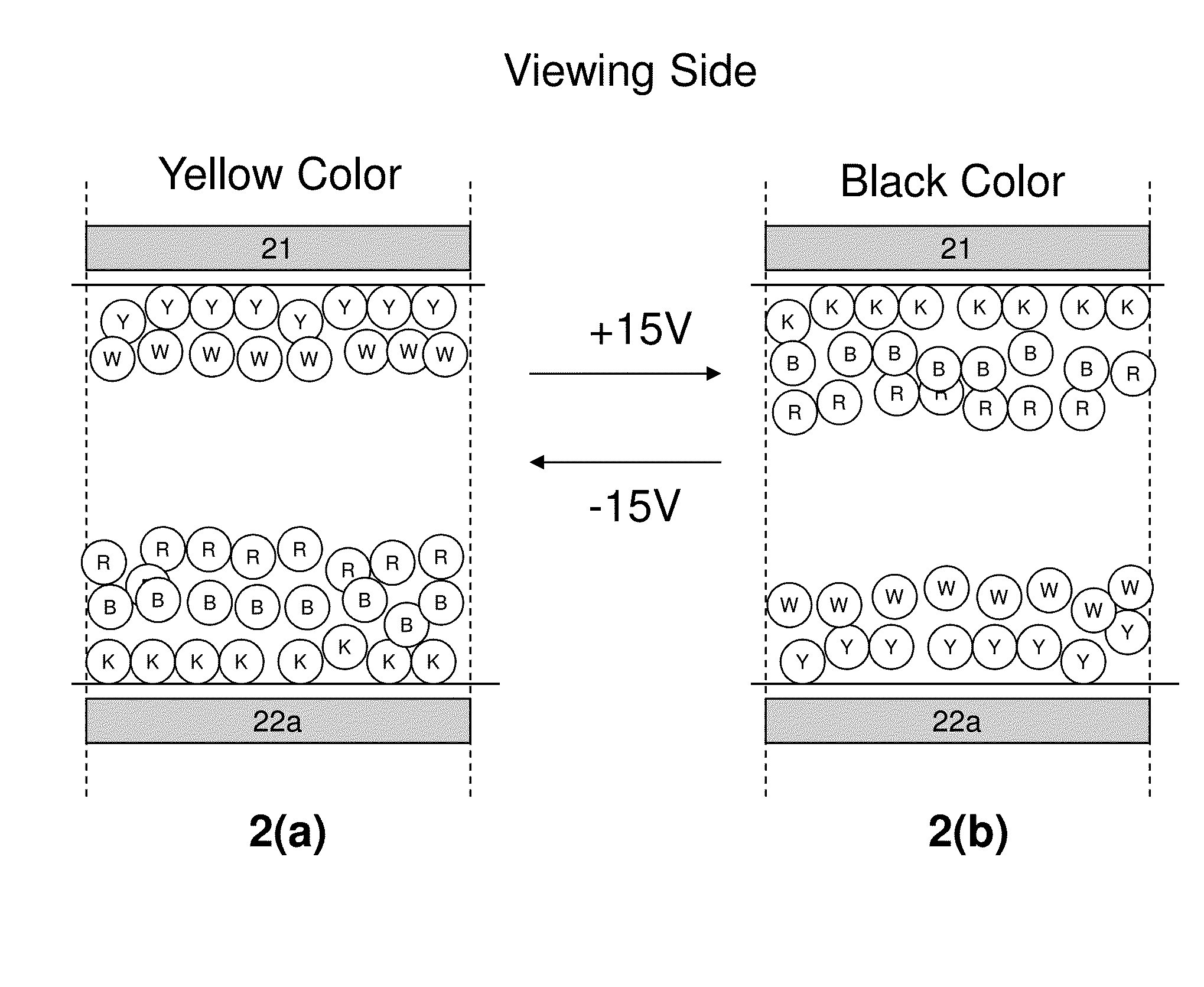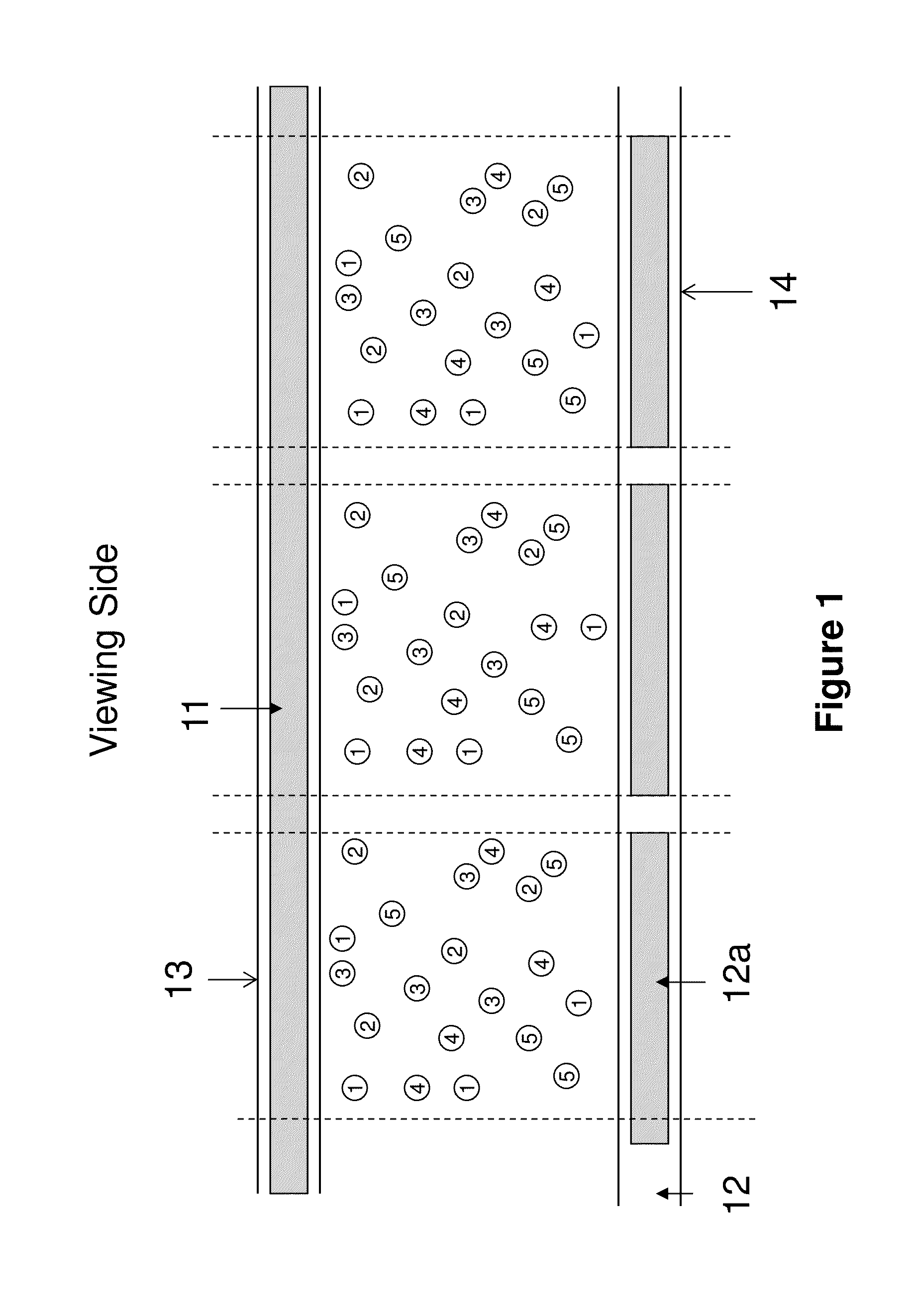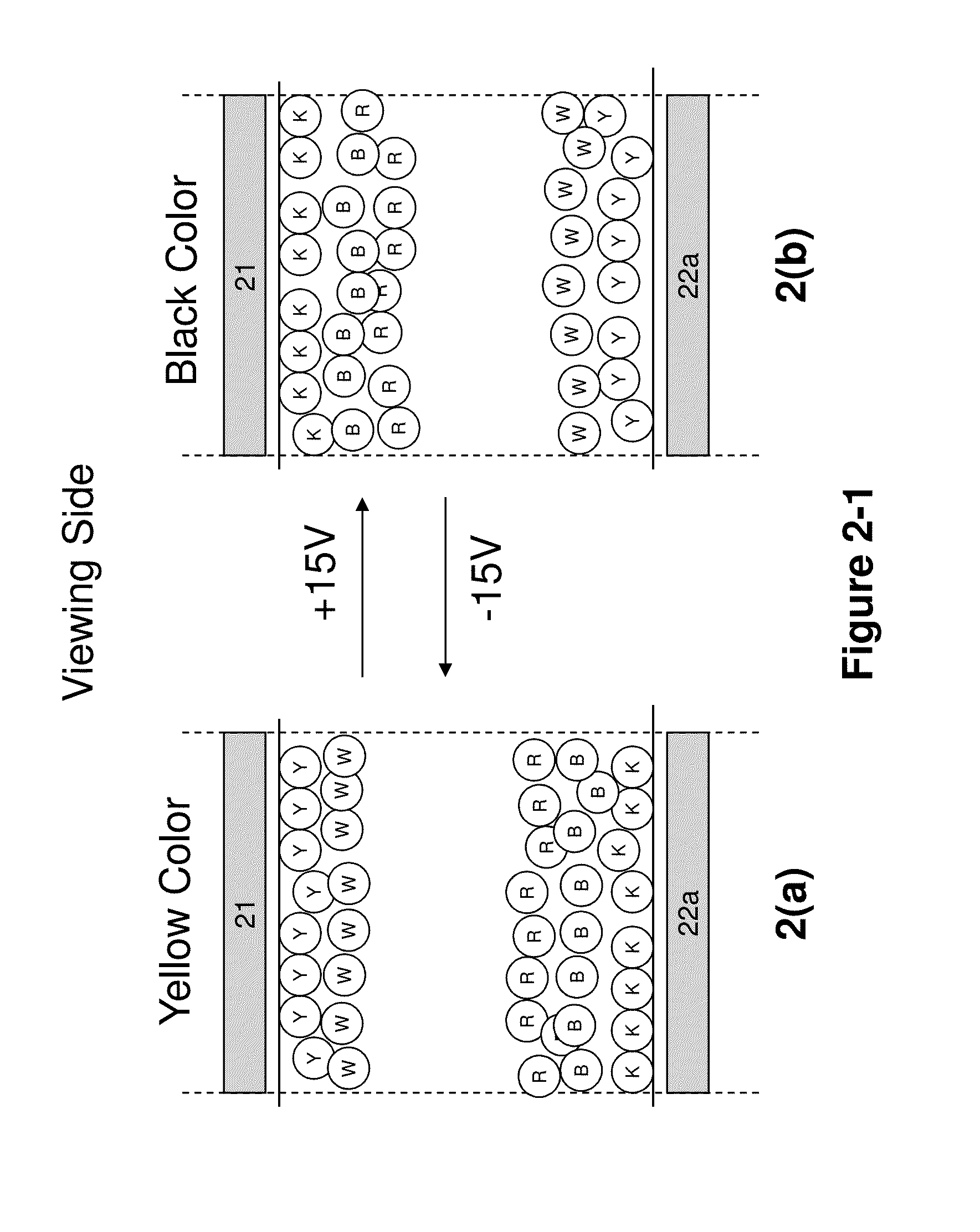Color display device
a display device and color technology, applied in the field of color display devices, can solve the problems of inacceptable choice of display devices, low color saturation, and relatively dim white sta
- Summary
- Abstract
- Description
- Claims
- Application Information
AI Technical Summary
Benefits of technology
Problems solved by technology
Method used
Image
Examples
example 1
[0038]In this example as shown in FIG. 2, the black particles (K) (i.e., the first type) carry a positive charge and the yellow particles (Y) (i.e., the second type) carry a negative charge. The blue (B) (i.e., the third type) and red (R) (i.e., the fourth type) particles are positively charged; but their magnitudes are progressively less than that of the black particles, which means that the black particles are high-positive particles, the blue particles are mid-positive particles and the red particles are low-positive particles. The white (W) particles (i.e., the fifth type) are negatively charged; but their magnitude is less than that of the yellow particles, which means that the yellow particles are high-negative particles and the white particles are low-negative particles.
FIG. 2-1
[0039]In FIG. 2-1, when a high negative driving voltage (e.g., −15V) is applied to the pixel (2b) for a time period of sufficient length, an electric field is generated to cause the high negatively cha...
example 2
[0119]In this example, the black and white particles carry the highest opposite charges. The black particles (K) (i.e., the first type) are positively charged and the white particles (W) (i.e., the second type) are negatively charged. The three types of colored particles, red (R) (i.e., the third type), green (G) (i.e., the fourth type) and blue (B) (i.e., the fifth type), are also positively charged and the black, red, green and blue particles have progressively lower magnitudes.
[0120]Since each type of particles has a distinguishable charge potential, there are different levels of attraction force between oppositely charged particles. FIG. 3 shows how five color states may be displayed.
FIG. 3-1:
[0121]In FIG. 3-1, a positive high driving voltage (e.g., +40V), is applied to a pixel of 3(a) in the white state; the high positively charged black particles move to be near or at the viewing side (i.e., the common electrode side), followed by the red, green and blue particles, to cause a ...
example 3
[0147]FIG. 6 illustrates particle mobility versus driving voltage of a system with three types of particles carrying the same charge polarity and two types of particles carrying opposite charge polarity.
[0148]As shown, in this example, the black (K), red (R) and green (G) particles are positively charged and the white (W) and blue (B) particles are negatively charged. It is noted that Va, Vb and Vc are positive and their magitudes are Va>Vb>Vc, and Vd and Ve are negative and the magnitude of Ve is greater than that of Vd.
[0149]Under a region of driving voltage of higher than Va, the black particles are the most mobile. In a voltage region between Va and Vb, the red particles are the most mobile, and in a voltage region between Vb and Vc, the green particles are the most mobile.
[0150]Also in FIG. 6, under a region of driving voltage of lower than Ve, the white particles are the most mobile. In a voltage region between Vd and Ve, the blue particles are most mobile.
[0151]FIG. 7 shows h...
PUM
| Property | Measurement | Unit |
|---|---|---|
| dielectric constant | aaaaa | aaaaa |
| dielectric constant | aaaaa | aaaaa |
| size | aaaaa | aaaaa |
Abstract
Description
Claims
Application Information
 Login to View More
Login to View More - Generate Ideas
- Intellectual Property
- Life Sciences
- Materials
- Tech Scout
- Unparalleled Data Quality
- Higher Quality Content
- 60% Fewer Hallucinations
Browse by: Latest US Patents, China's latest patents, Technical Efficacy Thesaurus, Application Domain, Technology Topic, Popular Technical Reports.
© 2025 PatSnap. All rights reserved.Legal|Privacy policy|Modern Slavery Act Transparency Statement|Sitemap|About US| Contact US: help@patsnap.com



